17. Holy Mountain (1973)
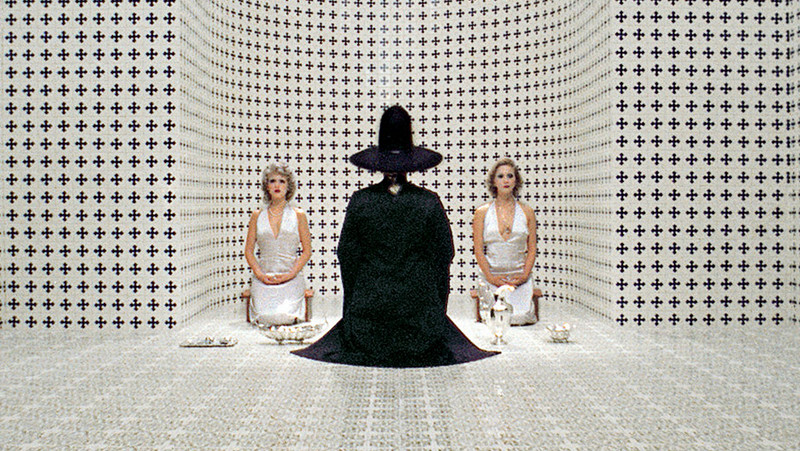
Inspired in equal parts by Roman Catholic saint/Spanish mystic John of the Cross, para-surrealist René Daumal, and one would imagine a shit ton of LSD, Alejandro Jodorowsky’s monumental midnight movie Holy Mountain is a visually rich pageant of strange psychedelia.
In control of every level of the film, Jodorowsky directed, wrote, produced, co-scored, co-edited and starred in the film––he also designed costumes, sets, and for all I know put sandwiches out on the craft services table––ensuring that the remarkable onscreen images came directly from him.
Having wowed arthouse audiences with his 1970 Acid Western El Topo (which is further down this very list) and in so doing Jodorowsky attracted interest from the likes of John Lennon and Yoko Ono––who both invested in this film and were hence credited as executive producers.
The loose narrative, which more or less runs through archetypal characters from the tarot deck, concerns Jodorowsky’s Alchemist as he leads a Christ-like figure (Horacio Salinas) and other adepts to a remote mountain of immortal seers.
The brutality and grotesque decadence on display seems unending, but Jodorowsky is blessed with a rich imagination and so he gets away with it. This fascinating and transfixing film is polarizing but undeniably powerful.
16. The Abominable Dr. Phibes (1971)
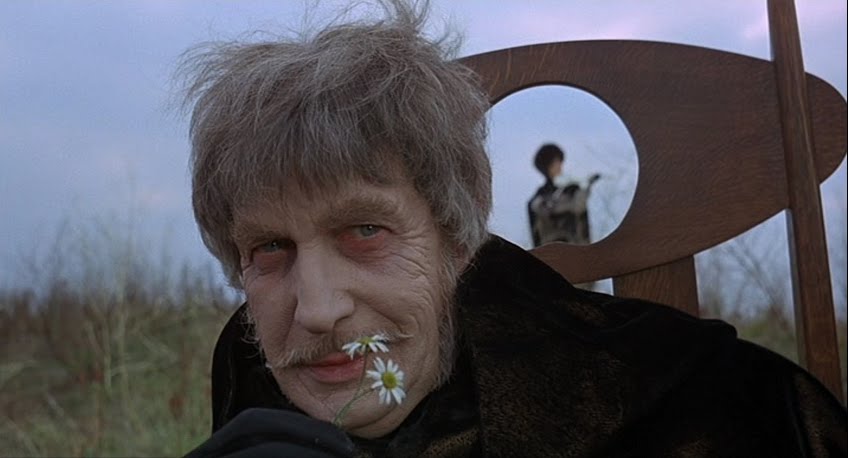
Vincent Price in his campy prime is pitch perfect as the eponymous figure in Robert Fuest’s darkly comedic horror film The Abominable Dr. Phibes. Shit out of luck, and with the cards cruelly stacked against him, Anton Phibes (Price) is terribly disfigured in a car crash while rushing to be at the side of his ailing wife, who soon after perishes.
Now presumed dead, Phibes figures it’s the fault of the surgeons that botched a procedure on his bride and so, inspired by certain passages from the Old Testament––specifically the Ten Plagues of Egypt––Phibes commences one doozy of killing spree.
There’s a strong Ken Russell vibe to Fuest’s aesthetic, and the art deco designs, musical asides (Phibes is an organist with one heck of a house band), it’s a film that is, as Variety puts it “[an] anachronistic period horror musical camp fantasy… loaded with comedic gore of the type that packs theatres and drives child psychologists up the walls.”
It’s a blood-soaked celebration and the 1972 sequel, Dr. Phibes Rises Again, is frightful fun, too.
15. Twitch of the Death Nerve (1971)
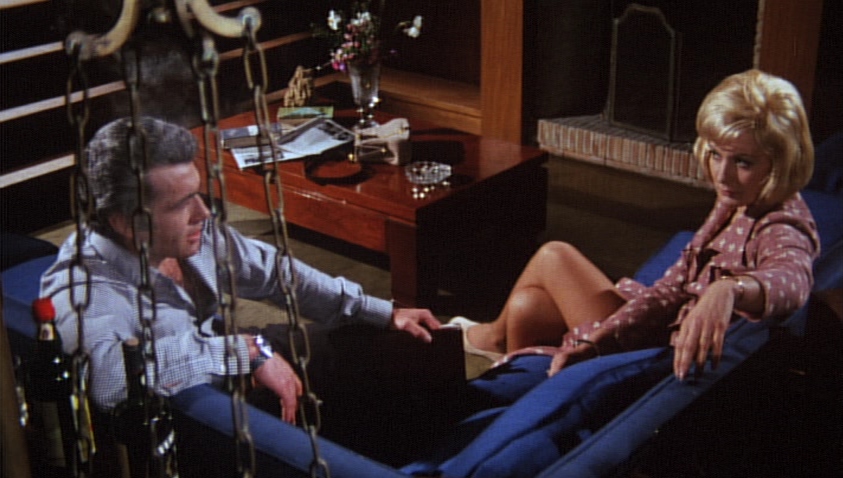
Italian horror legend Mario Bava, the man who elevated the giallo genre to dizzying heights did a similar cinematic coup for the modern slasher film with the artfully OTT and ultra-violent chiller Twitch of the Death Nerve (also known as Bay of Blood, Blood Bath, and Chain Reaction).
Co-written by Bava (along with Sergio Canevari, Filippo Ottoni, and Giuseppe Zaccariello), who also acted as cinematographer, the idea was to creatively and stylishly stage a string of ghastly and artfully gauche murders in what noted genre director and critic Joe Dante described as being “…assembled with a striking visual assurance that never ceases to amuse, this is typical Bava material, simply one ghastly murder after another––thirteen in all––surrounded by what must be one of the most preposterous and confusing plots ever put on film.”
What there is of a plot moves and remoulds itself around the nasty death of Countess Federica Donati (Isa Miranda), an heiress and owner of a beautiful tract of beachfront property, and soon the members of her family and the surrounding community, void of scruples, undertake a nasty ass killing frenzy, each with their own covert agenda.
Of course there is promiscuous sex in profusion, and hippies to harangue, and as the film races towards an exuberant finish it’s plain to see how it became the stencil for so many films to follow––one could argue and triumph that most of the Friday the 13th franchise and the Scream films are just a rehashing of this very film with diminishing returns––all amounting to establishing this as the pioneer and the prototype of the splatter film. Not for the squeamish, but ideal for a group viewing, this is one of the most imitated movies of all time and a must see for horror fans.
14. Vampyros Lesbos (1971)
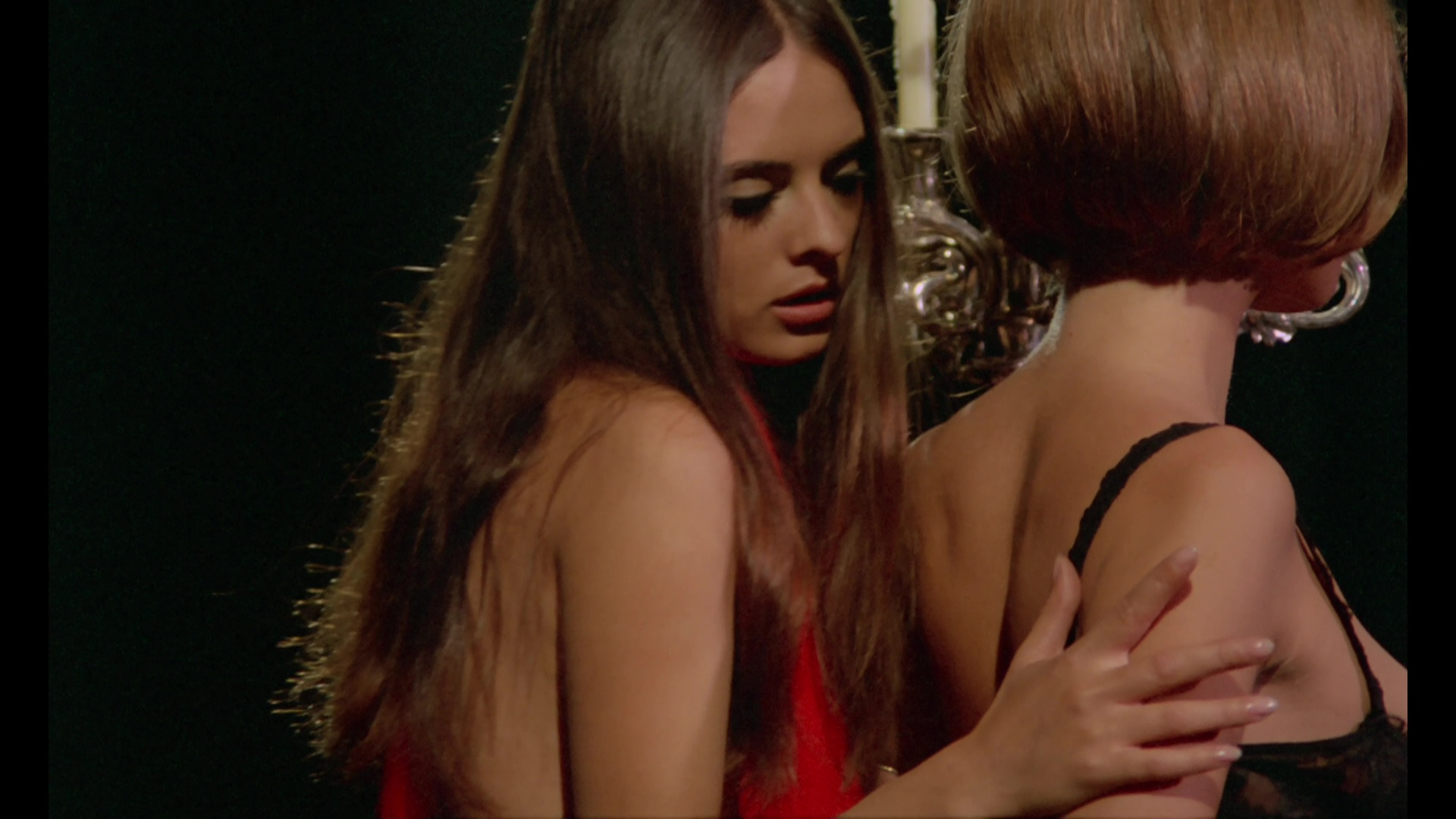
Generally accepted as the highpoint in Jesús “Jess” Franco’s prolific career –– there’s something like 200 films to his name –– Vampyros Lesbos details the desirable and libidinous Countess Nadine Carody (Soledad Miranda). When the pretty young lass, Linda Westinghouse (Swedish starlet Ewa Strömberg) is sent to settle the Countess’ estate on a remote island, well, things get steamy.
The film’s extensive love scenes avoid tedium due to the lovely lensing from Manuel Merino, the sumptuous giallo-like production design, and the thrumming psychedelic score from Siegfried Schwab, Manfred Hübler and Franco himself. The surreal imagery, lovely lead actresses, sexual pathology and constant titillation combined with the reworking of the well-established Dracula mythos make this movie something of a vintage exploitation standard.
13. Beyond the Valley of the Dolls (1970)
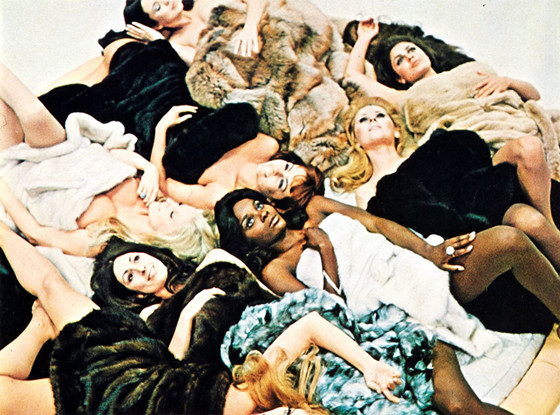
This parodying musical melodrama from Russ Meyer––with a screenplay from Roger Ebert––is a strange sequel to Valley of the Dolls (1967) that functions like a garish grab bag of camp, pop music, and exploitation cinema.
The film follows the Hollywood-based rock band Carrie Nations, comprised of three college brats (Marcia McBroom, Cynthia Myers, and Dolly Read) who are hungry for fame and willing to do what it takes to make it big and be the life of the party.
Gleefully embracing a debauched lifestyle and an “anything goes” mantra, the band is soon acting out like sex-crazed reefer addicts, popping , engaging in group sex, experimenting with lesbianism, going on murder sprees, and still managing to crank out some tunes in a druggy haze of rock ‘n’ roll excess.
For lurid entertainment of the self-consciously batty variety, Beyond the Valley of the Dolls is a singular and joyfully flaky experience.
12. Two-Lane Blacktop (1971)
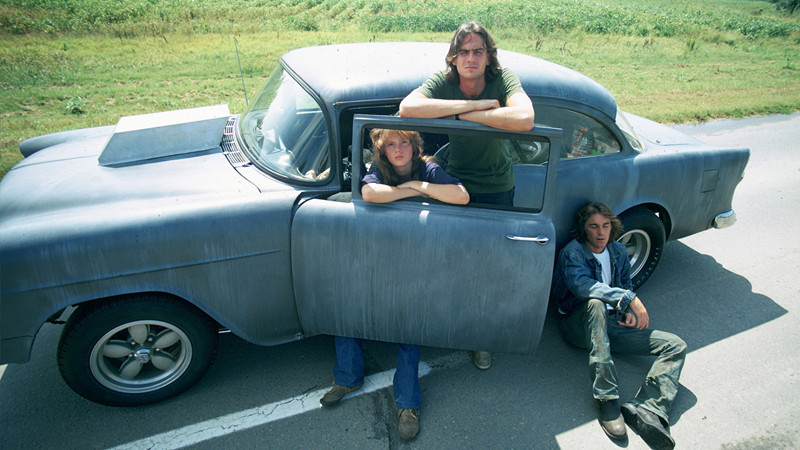
Quick question: are there many movies as cool as Monte Hellman’s immaculately assembled and languidly tense road movie Two-Lane Blacktop?
Answer: No way.
This existentialist exercise in eloquence and automobile fetishizing stars the Beach Boys drummer Dennis Wilson as the Mechanic and singer-songwriter James Taylor as the Driver––they’re both zero cool street racers––whose only aim appears to be to race and renew their 1955 Chevy. As they head east from California they give a lift to the Girl (Laurie Bird) and soon she’s playing them against one another via her feminine wiles.
As this unfortunate trifecta causes some mental anguish they run across Warren Oates’ GTO driver who wants to race them to New York. Toss in a cameo from Harry Dean Stanton, like this movie needed any more street cred, and up the ante by putting the ownership of their respective and enshrined automobiles on the line. An alluring, unsettling and unforgettable arthouse experience. Miss this movie at your peril.
11. Pink Flamingos (1972)
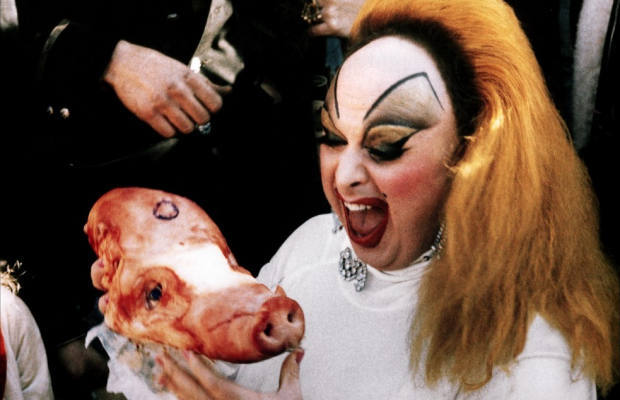
Kitschy cult icon and connoisseur of the uncouth, John Waters’ Pink Flamingos is a master class in all things trash. It’s also gut-bustingly hilarious, outrageous at every turn, and yes, frequently, unwatchable. Starring the splashy and sensational actor/drag queen/singer Divine as Babs Johnson, Pink Flamingos is both pitch-black comedy and exacerbated wildcat exploitation picture.
Divine plays the “filthiest person alive,” a criminal on the lam, hiding out in the suburbs, and eventually drawing ire from a contender couple, the Marbles, who claim to be every bit as base and offensive as she. The Marbles, Connie and Raymond (Waters regulars Mink Stole and David Lochary), take it as their charge to discredit and destroy Divine, with a plan involving a black market baby ring/adoption clinic catering to lesbians, and a plot to sell heroin to ghettoized public schools.
What follows is some of the most objectionable and off-color abuses ever to be wed to celluloid. Acts of emasculation, cannibalism, bestiality (the unsimulated sex scene with a chicken is justifiably notorious), and Babs’ for real shit-eating grin, are all the stuff of tawdry legend.
10. Harold and Maude (1971)
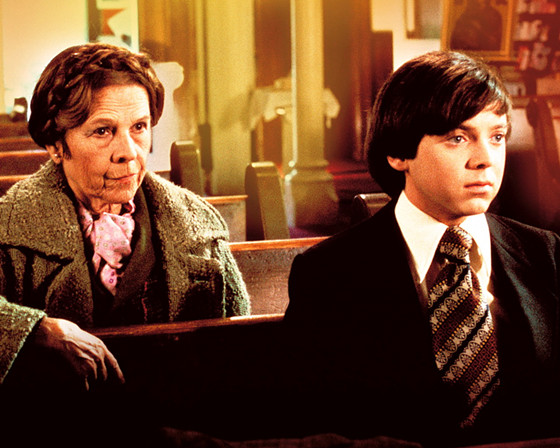
Even by modern measures, Hal Ashby’s heartfelt Harold and Maude is a taboo-smashing work of bravado and black humor. Bud Cort’s cherub-like appearance and otherworldly gaze as Harold Chasen, a death-obsessed young man in his twenties, is no small revelation, but Ruth Gordon, as the eccentric 79-year-old Maude Chardin, is a free-spirited tour de force.
Absurd and offbeat, the love story that develops between them is melancholic, profound, and red button risqué all the way. Initially a box-office bomb that got mixed reactions from critics, reassessment over the years has rightly established it as an underground phenomenon—Cat Stevens memorable score also helped authenticate the cult—and one that has, like Maude herself, overcome contempt and aged remarkably well.
9. The Warriors (1979)
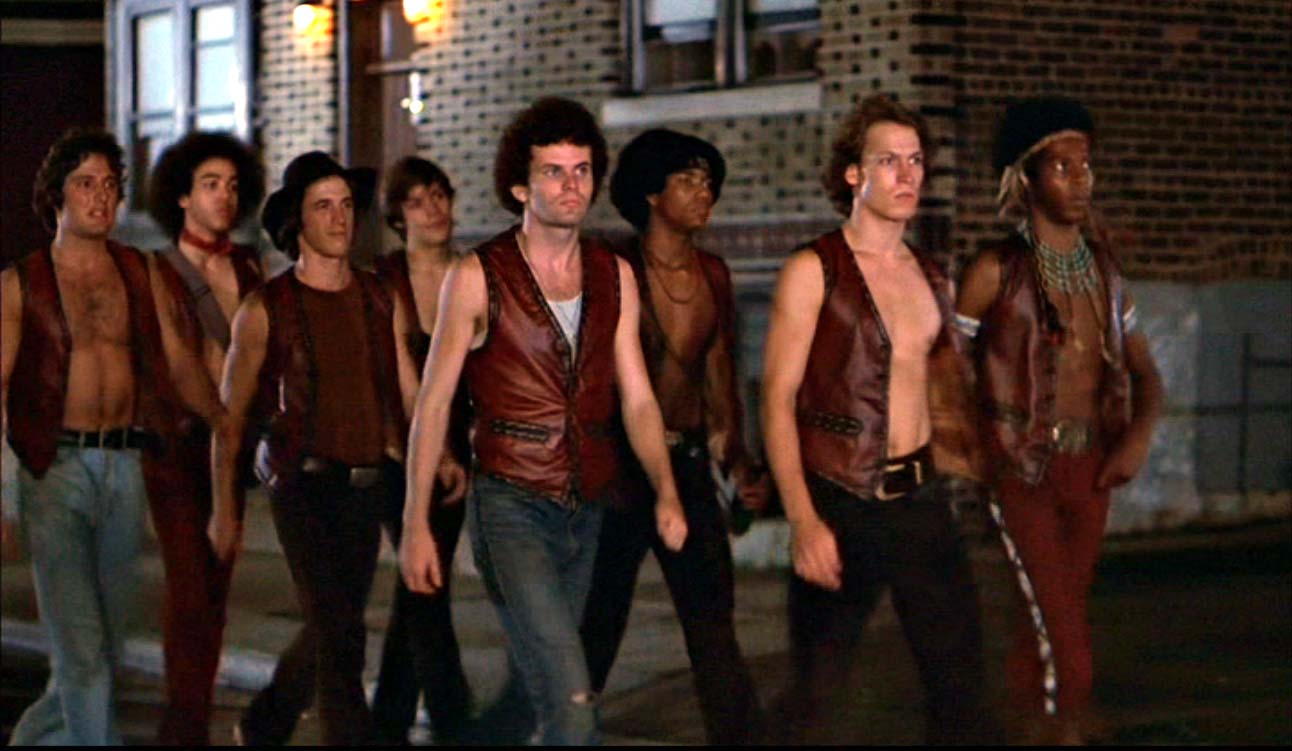
“Warriors, come out to play-ay!”
With a kitschy comic book aesthetic and a largely likeable ensemble cast, Walter Hill’s The Warriors depicts a turf war between New York City street gangs spanning from the Bronx to Coney Island.
Based off of the 1965 Sol Yurick novel, The Warriors gained notoriety upon its initial release when violence broke out in theaters across the US. One reason for this, as Hill has speculated that “the movie was very popular with the street gangs, especially young men, a lot of whom had very strong feelings… suddenly they all went to the movies together!”
The outbursts impacted the film in paradoxical ways: audiences wanted to see it, wondering if the violence was inspired by what was portrayed on the screen, but Paramount got cold feet and soon less cinemas were willing to screen it, and many that did suddenly had added security personnel to cut down on any riff-raff and provocateurs.
Wrongly identified as the perpetrators of a rival gang’s murder, the Warriors have to trek through New York to get to the safety of their turf while avoiding or else fighting head-on every gang in the city.
Going up against badass pugilists like the Baseball Furies, the Boppers, the Gramercy Riffs, the Punks, the Rogues, and more, not to mention the trigger happy and untrusting police force, the Warriors is a relentless action picture with mostly cartoonish confrontations, but some high style, and surprisingly intense confrontations. Check it out.